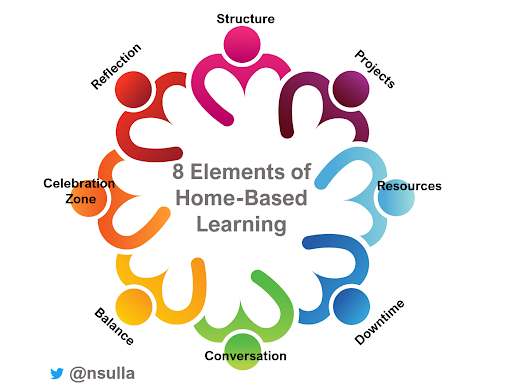
by guest blogger, Dr. Carrie L. Gentner, Coordinator of Digital Content, IDE Corp.
As a working mom, I empathize with parents trying to come to terms with the challenges our children will face this school year. My children’s school district decided to begin the year with remote learning for all students. Social media was soon flooded with parents and caregivers worried about “homeschooling” their children.
E-learning and remote learning are actually quite different from homeschooling. Homeschooling requires parents or caregivers to find educational resources and curricular materials, plan lessons, implement plans, and facilitate learning. In many cases, parents must formally withdraw their children from the public school system to homeschool.
As Dr. Nancy Sulla shares in her video on Eight Elements of a Home-Based Learning Environment: You’re not homeschooling; you’re managing a home-based learning environment! Instruction is provided by the school system but supported by parents/caregivers. Here are some tips to help you, your child, and educators work together for the benefit of all!
- Be patient with the process. Your child may be the most important person in your life, but the teacher has many other students whose needs must also be met. Technology may be an issue from time to time. Model for your child how to cope with setbacks and frustrations in healthy and appropriate ways.
- Keep an open line of communication. Make sure you know the best way to contact your child’s teacher. Find out if there is a preferred method of communication for time-sensitive requests or questions.
- Be on the same page. Seek to understand the expectations of your child’s teacher regarding virtual meetings, work completion, etc. Reinforce these expectations with your child. If you have a question about a procedure or expectation, ask (see previous suggestion).
- Stick to a schedule. When students are in school, they follow a schedule. Being able to create and maintain a schedule is an important executive function skill.
- Be flexible. If, after a few days, the schedule isn’t working, change it! If you’ve set up a work area for your children, but they prefer reading on the couch, let them. If you and your child are waiting for help from the teacher, move on to something else. If/then cards are a great way to model anticipating possible setbacks and being flexible when they arise!

Remember that everyone wants students to be successful. Administrators and teachers are working hard to ensure that students are safe while still providing high-quality instruction. Parents are trying to figure out how to work from home and support their children’s learning. This new way of schooling will take teamwork and understanding. We are all in this together! Visit our free site, 4theparents.idecorp.com, for more tips.
If you are actually homeschooling your child, MyQPortal has problem-based learning resources to support your endeavor. Please reach out if you’d like more information.
